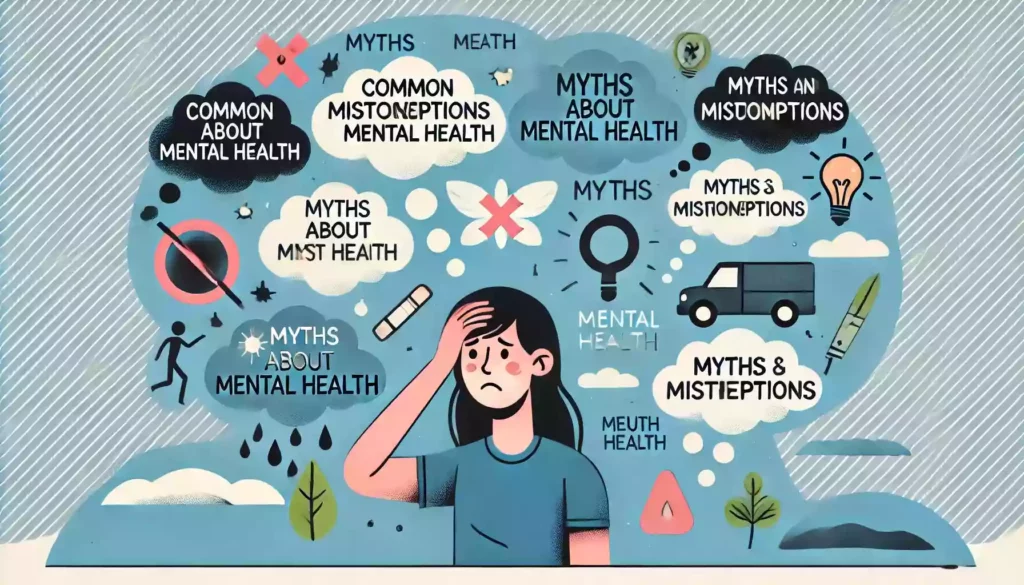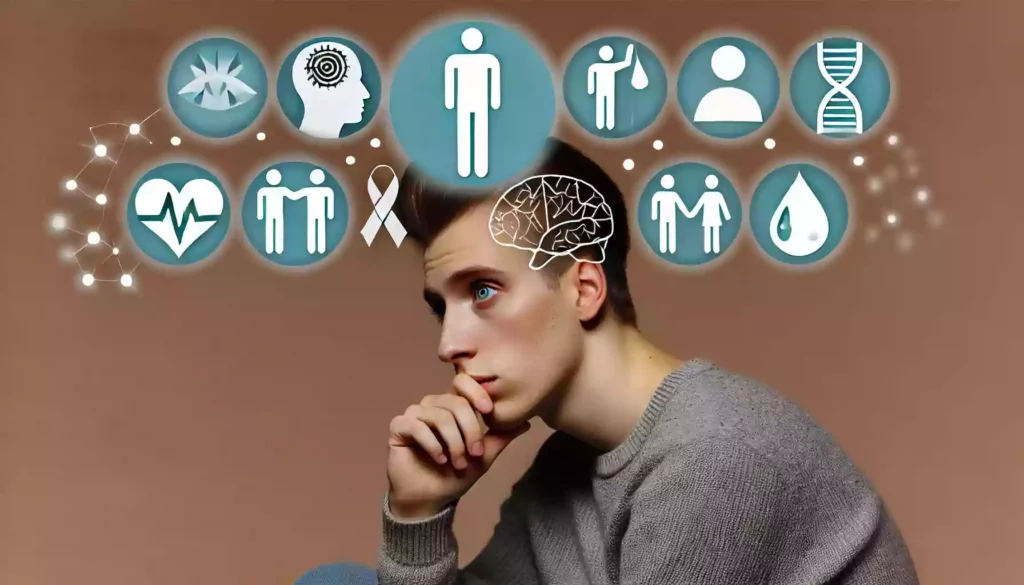Key Takeaways:
- Understand exhibitionism disorder.
- Identify emotional struggles.
- Debunk common misconceptions.
- Learn psychological theories.
- Implement practical management steps.
Understanding Exhibitionism Disorder
Exhibitionism disorder is characterized by a compulsion to expose one's genitals to unsuspecting strangers. This behavior, often driven by an underlying psychological need, can cause significant distress and impair daily functioning. People with this disorder may find themselves in a cycle of shame and guilt, struggling to understand why they engage in such actions. It is crucial to approach this topic with empathy and a desire to support those affected.
Understanding exhibitionism disorder involves recognizing it as a mental health condition that requires professional attention. This disorder is not merely a phase or a minor issue but a serious condition that can have far-reaching consequences if left unaddressed. By educating ourselves and others, we can create a more supportive environment for those struggling with this disorder.
The Emotional and Psychological Struggles
The emotional and psychological struggles faced by individuals with exhibitionism disorder are profound. Feelings of shame, guilt, and confusion are common, often leading to a sense of isolation. These individuals may experience intense anxiety about their behavior being discovered, which can exacerbate their distress.
Moreover, the compulsive nature of the disorder means that many individuals feel powerless to control their actions, despite the negative consequences. This loss of control can lead to a deteriorating sense of self-worth and an increased risk of depression. Understanding these struggles is key to offering effective support and intervention.
By acknowledging the psychological turmoil that accompanies exhibitionism disorder, we can better appreciate the need for compassionate and comprehensive treatment approaches. It is important to remember that those affected are often battling internal conflicts that are not immediately visible to the outside world.
Common Misconceptions

There are many misconceptions surrounding exhibitionism disorder that can lead to misunderstanding and stigma. One common myth is that individuals with this disorder are simply seeking attention or trying to be provocative. In reality, exhibitionism disorder is a complex mental health condition that often stems from deeper psychological issues.
Another misconception is that exhibitionism is always a sign of criminal behavior. While it is true that the disorder can lead to legal consequences, many individuals with exhibitionism disorder do not have criminal intent. They are driven by compulsions that they struggle to control, not by a desire to harm others.
It's also a myth that exhibitionism disorder is untreatable. With the right combination of therapy, support, and sometimes medication, many individuals can manage their symptoms effectively. Understanding and dispelling these misconceptions is crucial for fostering a more compassionate and supportive environment for those affected by the disorder.
Psychological Theories Behind Exhibitionism Disorder
Several psychological theories attempt to explain the underlying causes of exhibitionism disorder. One prominent theory is the psychodynamic perspective, which suggests that exhibitionism may result from unresolved conflicts or traumas from early childhood. According to this view, the act of exposing oneself can be a way to gain control or attention that was lacking during formative years.
The behavioral theory offers another explanation, proposing that exhibitionism is a learned behavior. This perspective suggests that individuals may develop the disorder through conditioning, where they associate the act of exposure with feelings of excitement or relief from anxiety. Over time, this behavior can become a compulsive response to certain triggers.
Cognitive-behavioral theory combines elements of both cognitive and behavioral approaches. It posits that distorted thinking patterns, such as viewing oneself as inadequate or seeking validation through inappropriate means, contribute to the development of exhibitionism disorder. Therapy often focuses on reshaping these thought patterns to promote healthier behaviors.
By understanding these psychological theories, we can gain insights into the complex nature of exhibitionism disorder and develop more effective treatment strategies. It's essential to approach the disorder with empathy and an open mind, recognizing that it is a multifaceted condition influenced by various psychological factors.
Recognizing the Signs and Symptoms

Recognizing the signs and symptoms of exhibitionism disorder is crucial for early intervention and support. One of the primary indicators is a persistent urge to expose one's genitals to unsuspecting strangers, often accompanied by intense fantasies or preoccupations with such behavior. These urges are typically recurrent and cause significant distress or impairment in daily functioning.
Individuals with exhibitionism disorder may also exhibit signs of anxiety or depression, especially if they are struggling to control their urges. They might avoid situations where they fear their behavior could be exposed, leading to social isolation. Additionally, feelings of guilt and shame are common, particularly after an episode of exhibitionism, which can further impact their mental health.
It's important to note that exhibitionism disorder is not just about the act of exposure but also the psychological distress and compulsive nature behind it. By identifying these signs early, loved ones and professionals can offer the necessary support and intervention to help individuals manage their condition effectively.
Impact on Relationships and Daily Life
Exhibitionism disorder can have a profound impact on relationships and daily life. The compulsive nature of the disorder often leads to strained relationships with family, friends, and romantic partners. Trust issues may arise, especially if the individual's behavior has led to legal consequences or social embarrassment.
In daily life, the disorder can interfere with one's ability to function normally. Individuals may struggle to concentrate at work or school, preoccupied with their urges and fantasies. They might also avoid social gatherings or public places, fearing an uncontrollable urge to expose themselves, which can lead to further isolation and loneliness.
The shame and guilt associated with exhibitionism disorder can also affect self-esteem and self-worth. Many individuals feel trapped in a cycle of compulsive behavior and regret, finding it difficult to break free without professional help. Understanding the far-reaching impact of this disorder on daily life and relationships highlights the importance of seeking comprehensive treatment and support.
Seeking Professional Help
Seeking professional help is a crucial step for individuals struggling with exhibitionism disorder. Mental health professionals, such as psychologists and psychiatrists, are equipped to provide the necessary support and treatment. Therapy can help individuals understand the underlying causes of their behavior and develop healthier coping mechanisms.
Cognitive-behavioral therapy (CBT) is often recommended for treating exhibitionism disorder. CBT focuses on identifying and changing negative thought patterns and behaviors. Through this therapeutic approach, individuals can learn to manage their urges and reduce the frequency of exhibitionistic behaviors.
In some cases, medication may be prescribed to help control compulsive behaviors and address any co-occurring mental health conditions, such as anxiety or depression. It is essential to work with a healthcare provider to determine the best course of treatment tailored to the individual's needs.
Support groups can also be beneficial, providing a safe space for individuals to share their experiences and receive encouragement from others who understand their struggles. Seeking professional help is a sign of strength and a vital step towards managing the disorder effectively.
7 Practical Steps to Manage Exhibitionism Disorder
Managing exhibitionism disorder involves implementing practical steps that can help individuals control their urges and improve their overall well-being. Here are seven steps to consider:
- Avoid Triggers: Identify and avoid situations or environments that trigger exhibitionistic urges. Being aware of these triggers can help in preventing impulsive behavior.
- Develop Healthy Coping Mechanisms: Engage in activities that provide a healthy outlet for stress and anxiety, such as exercise, meditation, or creative hobbies.
- Practice Mindfulness: Mindfulness techniques can help individuals stay present and manage compulsive thoughts. Techniques such as deep breathing and guided imagery can be particularly useful.
- Seek Therapy: Regular sessions with a therapist can provide ongoing support and strategies to manage the disorder. Therapists can offer personalized advice and help track progress.
- Build a Support Network: Surround yourself with understanding and supportive individuals who can offer encouragement and accountability. This network can include friends, family, or support group members.
- Stay Informed: Educate yourself about exhibitionism disorder to better understand the condition and the available treatment options. Knowledge can empower you to make informed decisions about your health.
- Set Realistic Goals: Set achievable goals for managing your behavior and celebrate small victories. Progress may be gradual, but every step forward is significant.
Implementing these steps can help individuals with exhibitionism disorder take control of their behavior and improve their quality of life. It's important to remember that managing this disorder is a continuous process that requires commitment and support.
Coping Strategies for Loved Ones
Supporting a loved one with exhibitionism disorder can be challenging and emotionally taxing. It's essential to approach the situation with empathy and understanding. Here are some strategies to help cope with this complex issue:
Educate Yourself: Understanding exhibitionism disorder is the first step in offering meaningful support. Learn about the condition, its causes, and treatment options. This knowledge can help you provide informed and compassionate assistance.
Maintain Open Communication: Encourage honest and open communication with your loved one. Let them know that they can talk to you about their struggles without fear of judgment. Being a good listener can make a significant difference.
Set Boundaries: Establishing clear boundaries is crucial for maintaining your well-being. Make sure your loved one understands your limits and respects them. Boundaries help create a healthy and supportive environment for both parties.
Encourage Professional Help: Support your loved one in seeking professional help. Offer to assist in finding a therapist or attending appointments if they need support. Professional treatment is vital for managing the disorder effectively.
Take Care of Yourself: Caring for someone with exhibitionism disorder can be draining. Ensure you are also looking after your own mental and emotional health. Engage in self-care activities and seek support from friends, family, or a counselor.
By employing these coping strategies, loved ones can provide valuable support while also taking care of their own needs. It is a delicate balance, but with patience and understanding, it is possible to navigate this challenging situation.
Frequently Asked Questions
Addressing common questions about exhibitionism disorder can help demystify the condition and provide clarity. Here are some frequently asked questions:
Is exhibitionism disorder treatable?
Yes, exhibitionism disorder is treatable. With the right combination of therapy, support, and sometimes medication, individuals can manage their symptoms effectively. Cognitive-behavioral therapy (CBT) is particularly effective in treating this disorder.
What causes exhibitionism disorder?
The exact cause of exhibitionism disorder is not fully understood. It is believed to result from a combination of genetic, environmental, and psychological factors. Early childhood experiences and unresolved conflicts may also play a role.
Can exhibitionism disorder lead to legal issues?
Yes, exhibitionistic behavior can lead to legal consequences, such as charges of indecent exposure. It is crucial for individuals with this disorder to seek professional help to manage their behavior and avoid potential legal problems.
Recommended Resources
For further reading and support, consider the following resources:
- "Understanding Paraphilias: A Comprehensive Guide" by Dr. Lawrence Kaplan
- "Cognitive Behavioral Therapy: Basics and Beyond" by Judith S. Beck
- "The Psychology of Sexual Behavior" by Dr. Mark H. Hall




Recommended Comments
There are no comments to display.
Create an account or sign in to comment
You need to be a member in order to leave a comment
Create an account
Sign up for a new account in our community. It's easy!
Register a new accountSign in
Already have an account? Sign in here.
Sign In Now